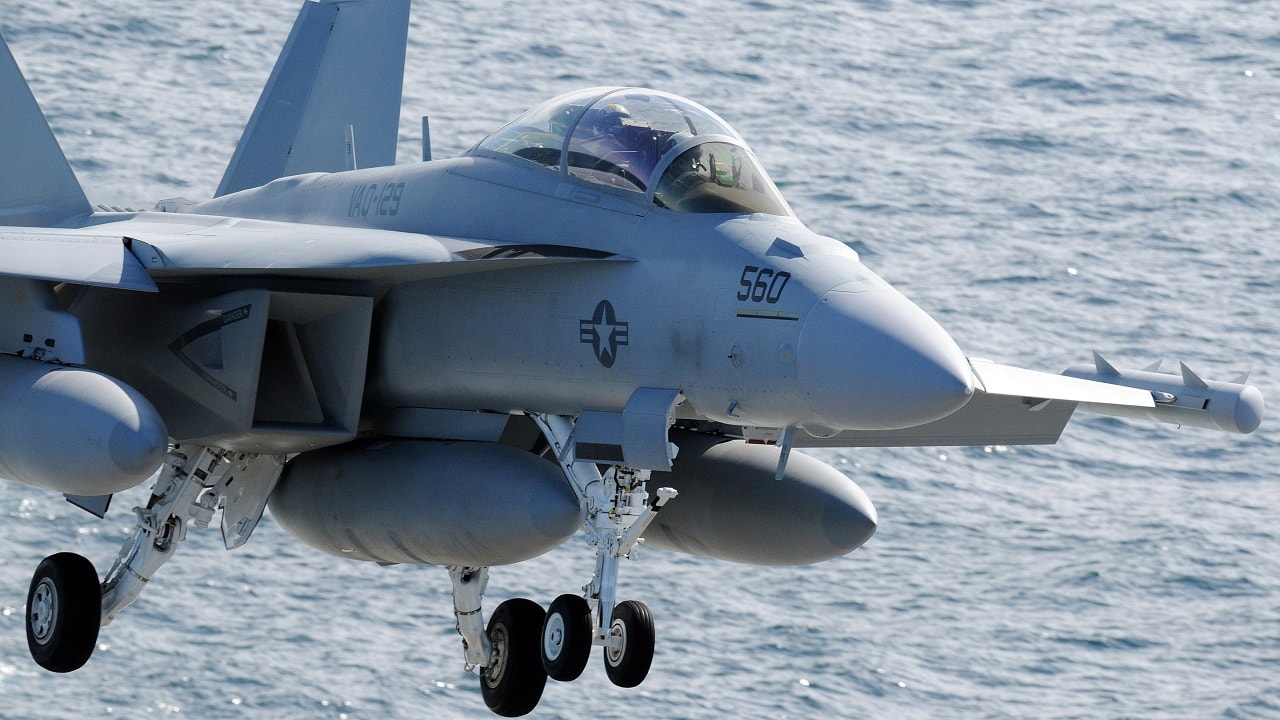Jamming weapons guidance systems, “blinding” an enemies’ targeting sensors, disabling communications systems and interfering with radar systems are all critical future warfare missions potentially performed by electronic warfare systems, or EW.
Dominating the electromagnetic spectrum is fast becoming a heavily prioritized area of future warfare focus given the growing extent to which networks and weapons systems rely upon electronics. A precision-guided weapon, for example, cannot hit its target if its RF guidance is interfered with or jammed by an EW.
The Navy’s 2024 budget documents reveal this emphasis as they allocate large amounts of money to “spectral” dominance regarding the 6th-Gen F/A-XX stealth fighter jet. Lasers, EW weapons and RF countermeasures are all technologies expected to figure prominently with NGAD, Navy and Air Force budget documents explain. An essay in “The Drive” states the Air Force’s Fiscal Year 2024 budget request calling for “studies…… to develop operational/system architectures to include family [sic] of systems and spectral dominance platforms.”
There are growing applications for EW due to rapid technological advances. AI-enabled, software-driven systems, for instance, can help deconflict the spectrum by identifying friendly from enemy frequencies and identifying which signals to jam. Spectrum information can be bounced off of a database to make rapid identification of which signals to jam. Also, sensors and communications systems can be tailored to emit a more “narrow” or streamlined “pencil” beam type of electromagnetic signal.
This is extremely critical as a larger or broader electronic signature can give away a location to an enemy, whereas a more targeted beam can exact an effect without emitting a large signature. When it comes to weapons guidance systems, developers are working on a technology called “frequency hopping” to essentially “counter” an electromagnetic jamming effort. Should one frequency be “jammed” or interfered with, weapons guidance systems can be adjusted to essentially “hop” from one frequency to another in order to sustain its track or guidance to a target. Hardening networks, datalinks or communication systems to operate in a jamming environment is critical to sustaining functionality in a contested EW environment.
For 6th-generation aircraft, EW can prove critical in the realm of manned-unmanned teaming, as both the Navy and Air Force plan to operate a “family of systems” wherein manned fighter jets control nearby drones from the cockpit. This can enable forward operating drones to “jam” enemy air defenses, overwhelm communications and share critical targeting detail across formations.
Passive EW can essentially “listen” to identify a “line of bearing” on an enemy electronic communication to locate signals to monitor or jam, whereas active EW can emit a signature to block, jam or interfere with a communication. Platforms are also increasingly using omni-directional antennas to tailor an electronic signal in a specific direction and avoid emitting a large 360-degree signature which would be easier for an enemy to detect.
For example, 6th-generation aircraft and the drones they network with can use hardened data links or SIGINT assets to emit EW signals for offensive use and also “harden” datalinks for more secure information exchange in a contested environment.
These kinds of applications are critical to Navy and Air Force plans for 6th-generation manned-unmanned teaming, referred to as Combat Collaborative Aircraft, or CCA. The concept is to network a “family” of systems to one another in real time using drones in close coordination with manned-fighter platforms to conduct forward surveillance, test enemy defenses, ensure precision guidance, harden targeting sensors or even deliver weapons.
MORE: PAK DA – Is Russia New Stealth Bomber a Joke?
MORE: Was the F-14 Tomcat Retired Too Early?
MORE: Nimitz-Class – The Best Aircraft Carrier Ever?
Kris Osborn is the Military Affairs Editor of 19 FortyFive and President of Warrior Maven – Center for Military Modernization. Osborn previously served at the Pentagon as a Highly Qualified Expert with the Office of the Assistant Secretary of the Army—Acquisition, Logistics & Technology. Osborn has also worked as an anchor and on-air military specialist at national TV networks. He has appeared as a guest military expert on Fox News, MSNBC, The Military Channel, and The History Channel. He also has a Masters Degree in Comparative Literature from Columbia University.

